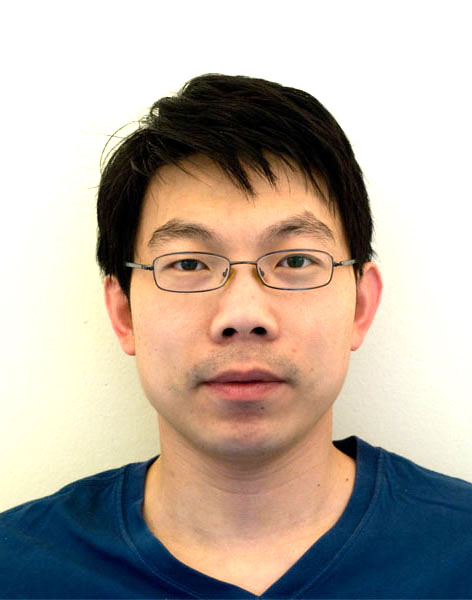
|
Professor Medical Research Institute
Tel: 86-27-68750036 Email: chenq124@whu.edu.cn |
Qiang Chen, Ph.D.
Research Areas:
DNA damage repair; Epigenetic modification and cancer
Education:
2002-2008 Ph.D. College of Life Sciences, Peking University, Beijing, China
1998-2002 B.S. College of Life Sciences, Shandong University, Jinan, China
Professional Experience:
2016-present Professor Medical Research Institute, Wuhan University, Wuhan, China
2015-2016 Research Fellow Beckman Research Institute, City of Hope, USA
2010-2015 Research Fellow University of Michigan Medical School, USA
2008-2010 Postdoc Peking University, Beijing, China
Publications:
1. Zhang W, Guo J, Chen Q. Role of PARP-1 in Human Cytomegalovirus Infection and Functional Partners Encoded by This Virus. Viruses 2022, 14(9), 2049.
2. Zhao Y, Yue S, Zhou X, Guo J, Ma S, Chen Q. O-GlcNAc transferase promotes the nuclear localization of the focal adhesion-associated protein Zyxin to regulate UV-induced cell death. J Biol Chem. 2022 Apr;298(4):101776.
3. Li, D., Liu, X. & Chen, Q. Centrosome, microtubule and DNA damage response. GENOME INSTAB. DIS. 3, 163–171 (2022).
4. Xu Z, Zhao L, Zhong Y, Zhu C, Zhao K, Teng Y, Cheng X, Chen Q, Xia Y. A Novel Mouse Model Harboring Hepatitis B Virus Covalently Closed Circular DNA. Cell Mol Gastroenterol Hepatol. 2022;13(4):1001-1017.
5. Ma S, Rong Z, Liu C, Qin X, Zhang X, Chen Q. DNA damage promotes microtubule dynamics through a DNA-PK-AKT axis for enhanced repair. J Cell Biol. 2021 Feb 1;220(2):e201911025.
6. Zhong L, Hu MM, Bian LJ, Liu Y, Chen Q, Shu HB. Phosphorylation of cGAS by CDK1 impairs self-DNA sensing in mitosis. Cell Discov. 2020 Apr 28;6:26.
7. Li W, Wang HY, Zhao X, Duan H, Cheng B, Liu Y, Zhao M, Shu W, Mei Y, Wen Z, Tang M, Guo L, Li G, Chen Q, Liu X, Du HN. A methylation-phosphorylation switch determines Plk1 kinase activity and function in DNA damage repair. Sci Adv. 2019 Mar 6;5(3):eaau7566.
8. Chen, Q. and Yu, X. (2016) OGT restrains the expansion of DNA damage signaling. Nucleic acids research.
9. Zhuo, X., Guo, X., Zhang, X., Jing, G., Wang, Y., Chen, Q., Jiang, Q., Liu, J. and Zhang, C. (2015) Usp16 regulates kinetochore localization of Plk1 to promote proper chromosome alignment in mitosis. The Journal of cell biology, 210, 727-735.
10. Bian, C., Chen, Q. and Yu, X. (2015) The zinc finger proteins ZNF644 and WIZ regulate the G9a/GLP complex for gene repression. eLife, 4.
11. Wang, G., Chen, Q., Zhang, X., Zhang, B., Zhuo, X., Liu, J., Jiang, Q. and Zhang, C. (2013) PCM1 recruits Plk1 to the pericentriolar matrix to promote primary cilia disassembly before mitotic entry. Journal of cell science, 126, 1355-1365.
12. Chen, Q., Chen, Y., Bian, C., Fujiki, R. and Yu, X. (2013) TET2 promotes histone O-GlcNAcylation during gene transcription. Nature, 493, 561-564.
13. Zhang, X., Chen, Q., Feng, J., Hou, J., Yang, F., Liu, J., Jiang, Q. and Zhang, C. (2009) Sequential phosphorylation of Nedd1 by Cdk1 and Plk1 is required for targeting of the gammaTuRC to the centrosome. Journal of cell science, 122, 2240-2251.
14. Chen, Q., Zhang, X., Jiang, Q., Clarke, P.R. and Zhang, C. (2008) Cyclin B1 is localized to unattached kinetochores and contributes to efficient microtubule attachment and proper chromosome alignment during mitosis. Cell research, 18, 268-280.
7. Chen, Q., Zhang, X., Jiang, Q., Clarke, P.R. and Zhang, C. (2008) Cyclin B1 is localized to unattached kinetochores and contributes to efficient microtubule attachment and proper chromosome alignment during mitosis. Cell research, 18, 268-280.